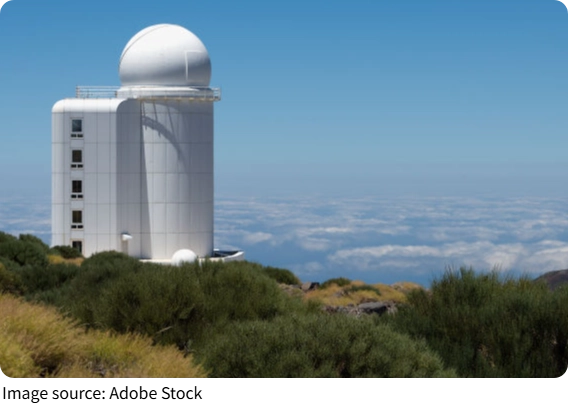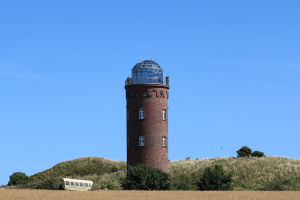Teide Scope Guide

Lykkers, if you're fascinated by stars, planets, and especially our Sun, the Teide Astronomical Observatory on Tenerife Island is a must-visit spot.
Sitting at 2,390 meters altitude in Teide National Park, this observatory offers clear skies and some of the world's most advanced telescopes, including the famous GREGOR solar telescope.
Visiting here lets you witness cutting-edge astronomy while enjoying stunning volcanic landscapes.
Getting There: Transportation Details
Teide Observatory is about 30 kilometers from Tenerife South Airport (TFS) and around 50 kilometers from Tenerife North Airport (TFN). The easiest way to get there is by car or organized tours. Public transport is limited but possible:
- By car: From the south, take TF-21 road towards Teide National Park, then follow signs to the observatory. Parking is free on-site.
- By bus: Some local buses run to the park entrance, but not directly to the observatory. Taxi from the visitor center costs around $10–$15.
- Guided tours: Many tour companies offer half-day or full-day trips from major towns like Santa Cruz or Playa de las Américas. Prices range from $50 to $100 per person, often including transportation and a guided visit.
Opening Hours and Access
The Teide Observatory itself is not fully open to the public due to it being an active research facility, but you can visit the nearby Visitor Center (Centro de Visitantes del Teide) daily:
- Hours: 9:00 AM to 5:00 PM.
- Admission: Free entry.
- Guided tours inside the observatory: Available only occasionally and by special booking. Prices start at around $30 per person. Check the official website for availability and booking.

Best Time to Visit
- Daytime: The Visitor Center is perfect for learning about the telescopes and solar science.
- Nighttime: Although the observatory closes, Teide National Park offers some of Europe's best stargazing spots.
- Season: Spring (March to May) and autumn (September to November) provide the best weather—clear skies and comfortable temperatures.
Highlight: The GREGOR Solar Telescope
GREGOR is Europe's largest solar telescope, built to capture detailed images of the Sun. While public access inside is limited, the Visitor Center offers photos, videos, and live streams explaining how GREGOR studies solar activity such as sunspots and flares.
Practical Tips for Visitors
- Altitude: The observatory is nearly 2,400 meters above sea level. Take it slow and drink plenty of water to prevent altitude sickness.
- Weather: Temperatures can drop quickly, even in summer. Bring warm clothing and windproof jackets.
- Sun protection: Strong UV radiation at this height means sunscreen, sunglasses, and hats are essential.
- Booking: Reserve special tours early, especially in peak seasons.
- Combine your visit: Add a ride on the Mount Teide cable car ($27 for adults) or explore hiking trails in the national park.
Nearby Attractions and Costs
- Mount Teide Cable Car: $27 per adult, $13.50 for children (4–12 years). Open daily from 9:00 AM to 4:00 PM (last ascent).
- Stargazing tours: Prices vary, generally $40–$70 per person for guided night sky observation.
- National Park entrance: Free, but car access may require a permit in some zones.
What to Expect
The Teide Astronomical Observatory combines world-class science with breathtaking natural beauty. While access to the telescopes themselves is limited, the Visitor Center and surrounding park provide an unforgettable experience. With careful planning and the right gear, you'll enjoy a unique chance to connect with astronomy and nature in one of Europe's top locations.
Look Up and Explore
Lykkers, the Teide Observatory is not just about powerful telescopes — it's your doorway to the stars and breathtaking natural beauty. Get ready for an unforgettable adventure, take care with the altitude, and let the magic of the universe inspire you. Together, we'll keep looking up and discovering new wonders!
Teide Star Observatory
Video by BrainSnacks
-
 Climb. Look. Breathe.Climb This Hidden German Lighthouse for Stunning Baltic Sea Views You Won’t Believe Exist!
Climb. Look. Breathe.Climb This Hidden German Lighthouse for Stunning Baltic Sea Views You Won’t Believe Exist! -
 Sunrise Sea BitesWake up to a luxurious breakfast by the sea in Maldives—fresh tastes, ocean views, and mornings you’ll never forget!
Sunrise Sea BitesWake up to a luxurious breakfast by the sea in Maldives—fresh tastes, ocean views, and mornings you’ll never forget! -
 Where to Stay in LisbonFrom romantic rooftops to buzzing streets, discover where Lisbon truly comes alive—without blowing your budget!
Where to Stay in LisbonFrom romantic rooftops to buzzing streets, discover where Lisbon truly comes alive—without blowing your budget!